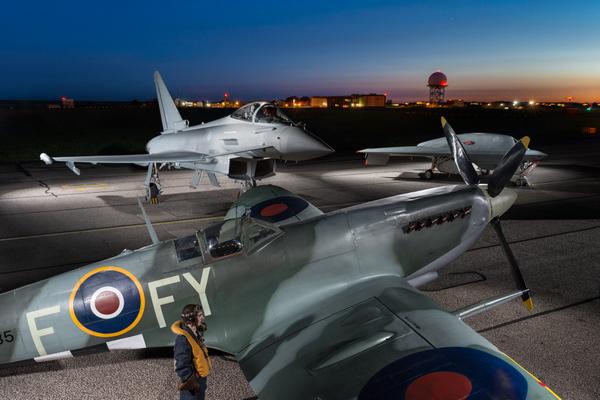Ridicule? Remember the black Chinese stealth. The Japanese think differently and were able to see a plane on test bed for what it is. No over dramatization.Is this kind of language and ridicule really necessary? By this logic, if it can be called that, someone forgot to tell the Americans what stealth "colour coding" is.
International Aerospace Discussion
Re: International Aerospace Discussion
Re: International Aerospace Discussion
Thank you for stating the obvious.brar_w wrote:That F-35 is before it has gone into the Paint shop.Is this kind of language and ridicule really necessary? By this logic, if it can be called that, someone forgot to tell the Americans what stealth "colour coding" is
https://www.youtube.com/watch?v=JwvZLqtAZWY
Anyway, Since the Japanese fighter is a test bed, they can paint it whichever color they want, or none at all
Re: International Aerospace Discussion
Need credentials ...........................
Thales Reveals 6-Kg Glide Bomb For UAVs

Thales Reveals 6-Kg Glide Bomb For UAVs

The weapon, known as the FreeFall LMM or FFLMM, is a 70-cm (28-in.) long, 6-kg (13-lb.) glide bomb with many of the common components used on the LMM missile developed by Thales to meet the U.K. Defense Ministry’s Future Air-to-Surface Guided Weapon (Light) (FASGW (L)) requirement.
Re: International Aerospace Discussion
US: Qatar To Buy Patriot Missiles in $11B Deal
WASHINGTON — Qatar will buy US Patriot missiles for the first time in a major arms deal worth $11 billion, officials said Monday, as Washington awaits a decision by the Gulf state on a lucrative fighter jet contract.
The sale will provide Qatar with roughly 10 batteries for Patriot systems designed to knock out incoming missiles, as well as 24 Apache helicopters and 500 Javelin anti-tank missiles, the US officials, who spoke on condition of anonymity, told AFP.
Qatar was investing in missile defense systems to counter what it sees as the threat from Iran across the Gulf, as Tehran has built up its missile arsenal, officials said.
The weapons deal was the biggest for the United States in 2014 and came as Qatar weighs proposals in a fighter jet competition, with US aerospace firm Boeing vying against British BAE Systems and Dassault Aviation of France.
“It’s a good sign,” said a senior defense official, referring to the arms sale and the prospects for the fighter jet bidding.
“It’s a pretty significant step.”
Qatar’s minister of state for defense, Maj. Gen. Hamad bin Ali al-Attiyah, committed to the sale in a signing ceremony Monday in Washington after talks with his American counterpart, Chuck Hagel.
“Today’s signing ceremony underscores the strong partnership between the United States and Qatar in the area of security and defense and will help improve our bilateral cooperation across a range of military operations,” said Hagel’s press secretary, Rear Adm. John Kirby.
It was also the first time Qatar had acquired Patriot missiles, which other Gulf countries such as Kuwait, Saudi Arabia and the United Arab Emirates have purchased in the past.
Building Ties With Qatar
US officials and commanders have long urged their Gulf partners to set up a coordinated missile defense network to counter Iran, but cooperation has been slow in coming.
The weapons would enhance America’s security and diplomatic ties to Qatar, the US official said, despite disagreement over Syria and Qatar’s assistance to some rebel groups deemed too radical by Washington.
Gulf allies also have voiced concern over US diplomacy with Iran over its nuclear program, fearing the United States may shift away from its long-standing hostility to Tehran.
Officials said the arms sale offered a way of forging closer ties to Qatar and to cultivate relationships with the country’s military through training on US-made aircraft and weapons.
“This is an investment in the next generation (of military leaders) ... It’s an investment for the long-run,” the senior official said.
The sale follows a visit to Qatar last December by the US defense secretary, and talks in May between Hagel and Qatari and other Gulf defense chiefs.
Qatar hosts a vital hub for the US military, the Combined Air Operations Center, where officers oversee combat aircraft in Afghanistan and track air traffic across the volatile Middle East.
In his talks with the Qatari minister, Hagel expressed his “appreciation for the support that Qatar provides US forces in the country,” Kirby said.
“This is a critically important relationship in the region,” said Kirby. “And the secretary is pleased to be able to continue to make it stronger.”
Creating US Jobs
Arms sales also are a way of boosting the US economy, and the deal with Qatar is expected to produce up to 54,000 jobs, according to estimates cited by Pentagon officials.
US defense giants Raytheon and Lockheed Martin manufacture the Patriot missile hardware and Javelin anti-tank missiles, while Boeing produces the AH-64 Apache chopper.
The Patriot missile sale, involving 247 PAC-3 and 117 GEM-T missiles, was worth more than $7 billion. The Apache helicopters and related gear came to more than $3 billion and the Javelin anti-tank missiles over $100 million, according to officials.
Qatar has stepped up weapons purchases as it takes on an increasingly influential role in the region.
The government took the extraordinary step last year of delaying a deadline for proposals by three months in its fighter jet competition after the United States asked for an extension.
The gas-rich kingdom wants to buy a new fleet of modern fighter jets. BAE is offering the Typhoon, while Dassault Aviation hopes Qatar will select the Rafale aircraft. Boeing is promoting F-18 Super Hornets and F-15 fighters for the contract.
Qatar currently has an aging fleet of 12 Dassault Mirage warplanes, but it remains unclear when the country will choose a new fighter. Some analysts have speculated the government may split the contract, opting for both US and European aircraft.
Re: International Aerospace Discussion
Su-27s for sale


Asking price: $5 Mil.NOTE: Both of these aircraft have been SOLD and are no longer available. This page is for informational and historical purposes only.


10 December 2009 -
FIRST FLIGHT! After much preparation and work, Flanker #31 (N131SU) became the first civilian-operated Su-27 Flanker in history. The aircraft blasted off Runway 25 at Rockford Airport (KRFD) (Illinois) after a takeoff roll of approximately 1100 feet, and climbed out of sight at a 30-degree pitch attitude. The pilots conducted a 40-minute long litany of systems checks, all of which were nominal, then returned for several low approaches and a graceful landing.
Last edited by NRao on 17 Jul 2014 06:25, edited 1 time in total.
Re: International Aerospace Discussion
"Japs" is a pejorative. "Japs." is less so. The preferred appellation is "Japanese"deejay wrote:
Ridicule? Remember the black Chinese stealth. The Japanese think differently and were able to see a plane on test bed for what it is. No over dramatization.
Re: International Aerospace Discussion
May I submit my humblest apologies to the Japanese and others for my slight.Cosmo_R wrote:"Japs" is a pejorative. "Japs." is less so. The preferred appellation is "Japanese"deejay wrote:
Ridicule? Remember the black Chinese stealth. The Japanese think differently and were able to see a plane on test bed for what it is. No over dramatization.
Re: International Aerospace Discussion
The Scorpion Jet
Could be a good plane for middair FACs (forward air controllers)
http://www.nzherald.co.nz/motoring/news ... _id=144231
Could be a good plane for middair FACs (forward air controllers)
http://www.nzherald.co.nz/motoring/news ... _id=144231
Re: International Aerospace Discussion
Revolutionary UAV developed by Russian firm.No airstrips required.
http://en.ria.ru/military_news/20140709 ... ition.html
Russia Presents Unique Drone at Innoprom-2014 Exhibition
http://en.ria.ru/military_news/20140709 ... ition.html
Russia Presents Unique Drone at Innoprom-2014 Exhibition
MOSCOW, July 9 (RIA Novosti) – Russia’s United Instrument-Making Corporation, a Rostec subsidiary, presented the unique and innovative Chirok drone at the Innoprom international technology exhibition, the press service of the state corporation reported.
"The innovative technology, air-cushion landing system, allows the drone to take off without an air strip. This technology is absolutely unique. The drone is able to take off from soft soil, water, marshy terrain and loose snow. It can also land on these surfaces, whereas other aircraft can neither take off from nor land on them," the press service said.
The drone model presented at Innoprom has already been tested in Zhukovsky, a city in Moscow Region that hosts the MAKS air show. The unmanned aerial vehicle (UAV) has no analogues in the world, and other models with air-cushion landing systems are not in mass production.
In ordinary life, Chirok can be used to observe and assess different situations – to monitor the threat of fire in forests, disaster areas and road and traffic conditions, as well as for patrol. As for military utility, Chirok is intended for reconnaissance and can also be used as an offensive operations drone, capable of carrying weapons.
Chirok’s maximum takeoff weight is up to 700 kilograms, the payload weight limit is up to 300 kilograms. The UAV can carry opto-electronic devices for various types of monitoring, and the transport of bombs, rockets and high-precision missiles. The drone can rise to a height of 6,000 meters (approximately 19,600 feet), with a range of up to 2,500 kilometers (approximately 1,550 miles). Currently, specialists at the military-industrial complex are working on further improving Chirok’s technical capabilities.
Russia’s Innoprom is an international industrial exhibition held annually in Yekaterinburg, in the Ural Federal District. This year the exhibition opened July 9 and runs through July 12.
Re: International Aerospace Discussion
Raytheon Targeting Tomahawk of the Future
With funds for new-production Tomahawk cruise missiles shrinking, Raytheon is looking to cash in on the next best thing — upgrades and “recertifications” of existing missiles, an effort that could last a decade or more.
The recertification program — which could begin as early as 2018 — would coincide with major upgrades to make the weapon semi-autonomous, faster and smart enough to track moving targets.
Factory production is very much on the mind of the Massachusetts-based company these days. Roy Donelson, Raytheon’s Tomahawk program director, said the company requires production of 196 missiles per year as a minimum to keep the line going.While they got that in the presidential budget request for fiscal 2014, the number was dropped to 100 for 2015.
See full Defense News coverage of the Farnborough Airshow
Congress has bumped that figure back up to 196 for fiscal ’15, but future quantities remain in question.
The company may have something of a backup plan if missile orders are cut in the future. Donelson spent a significant part of a briefing for reporters here discussing the plan for “recertification” of the Tomahawk arsenal.
The thinking is this: The Tomahawk Block IV was introduced in 2004 with a 15-year warranty and 30-year life span. Some of that first wave of Tomahawks are still being carried around, unused, and are will reach that 15-year mark at the end of this decade.
Raytheon will take them in and certify that they are still operational at a rate fairly close to the production rate. And while the weapons are in the factories, why not put a whole suite of upgrades in there?
“The value proposition is incredible, because now you can get a brand new missile in terms of capability at a fraction of the cost,” Donelson said.
What advancements make the next-generation Tomahawk? The first is an advanced communications and navigations suite, which Donelson said will be ready to start an engineering and manufacturing development (EMD) program next year with an eye on readiness by 2018. That, in conjunction with a new seeker design, would allow the weapon to track targets with greater accuracy.
The second is a new joint multiple-effect weapons system warhead, which would give the Tomahawk more flexibility. Operators could prefer to go with a weapon that provides better penetration or one that provides an expanded blast effect. That could be ready to start EMD next year, with a target date of 2019.
“You can see where this is all leading up, Donelson said. “Once we start this recertification program in 2018 and 2019, all these programs would be available.”
At the end of this, as a Raytheon promotional video showed, the Tomahawk should be able to strike moving targets on land and at sea, regardless of jamming, with increased precision and effectiveness.
The company is also looking at making the Tomahawk supersonic, but that is more of a next-generation design rather than a recertification upgrade. Doing so would require looking at the airframe and alternative engines, Donelson said, but he insisted the company would not make changes that would require a redesign of the vertical launch system currently used for the weapons.
Re: International Aerospace Discussion
F-15E takes first flight with new radar system

APG-82 V(1) is a new radar that uses an advanced version of the Next generation T-R modules developed for the Apg-63 V (3) AESA radar mated to the back end of the Apg-79 AESA radar of the F-18E/F. Production of the 3 radars (-79, 82, RACR) stands around 10 a month and will upped shortly as the RMP goes into full swing. The -82 would be the largest (TR count) AESA in the western world.

The first 389th Fighter Squadron F-15E Strike Eagle received a Radar Modernization Program upgrade here in June.
The inaugural flight with the new radar system was flown by Capt. Matthew Riley, 389th Fighter Squadron pilot, and Maj. Jacob Lindaman, 389th FS weapon systems officer.
"The new radar system does everything faster, is extremely precise and requires less maintenance," Riley said. "It can designate air-to-air and air-to-ground simultaneously, allowing us to track enemy aircraft and identify ground targets at the same time."
According to the U.S. Air Force RMP first annual report at http://www.dote.osd.mil/pub/reports/FY2 ... 11f15e.pdf, this new radar system is designed to retain functionality of the old legacy radar system while providing expanded mission employment capabilities to include:
- Near-simultaneous interleaving of selected air-to-air and air-to-ground functions
- Enhanced air-to-air and air-to-ground classified combat identification capabilities
- Longer range air-to-air target detection and enhanced track capabilities
- Longer range and higher resolution air-to-ground radar mapping
- Improved ground moving target track capability
"In order to maintain our combat edge in today's challenging environment, Air Combat Command must balance resources between refurbishing our existing fleet and investing in future weapon systems," said Gen. Mike Hostage, ACC commander.
The RMP replaces the F-15E's more than 20-year-old legacy APG-70 mechanically scanned radar with an active electronically scanned array (AESA) system designated as the APG-82(V)1.
"The old radar system is hydraulic, has moving parts and requires three maintainers to perform repairs after every 30 flight hours," said Master Sgt. Jennifer Schildgen, 366th Fighter Wing avionics manager. "The new radar system is a beam scan, doesn't have any moving parts and is projected to only require one maintainer to perform repairs after more than 2,000 flight hours."
The modification process is managed by Boeing representatives and takes two to three months to complete for each aircraft. The tentative plan is to complete RMP for 47 aircraft from the 389th FS and 391st Fighter Squadron by 2017.
So far, the T-Bolts fighter aircraft has flown more than 11 hours with the new radar.
"This radar was made exclusively for the strike eagle and should outlast the jets," Riley said.

APG-82 V(1) is a new radar that uses an advanced version of the Next generation T-R modules developed for the Apg-63 V (3) AESA radar mated to the back end of the Apg-79 AESA radar of the F-18E/F. Production of the 3 radars (-79, 82, RACR) stands around 10 a month and will upped shortly as the RMP goes into full swing. The -82 would be the largest (TR count) AESA in the western world.

Re: International Aerospace Discussion
http://www.bbc.com/news/business-28260781Khalsa wrote:The Scorpion Jet
Could be a good plane for middair FACs (forward air controllers)
http://www.nzherald.co.nz/motoring/news ... _id=144231
The real takeaway for me was that it was built in two years using COTS. Secret? Textron built it without the gold plating requirements that defense departments around the world put in on every conceivable part.
It's specifically designed to operate in uncontested airspace. Now, if Textron wanted to build it India with 100% FDI with no IAF orders, I'd say go for it.
This is how the US aerospace industry got built. Some guy/company would build a prototype and do a fly-off and bag the order. Grumman, Republic, Chance Vought, Convair, McDonnell . I built all those Revell kits getting zonked on the glue.
Re: International Aerospace Discussion
Secret ?Cosmo_R wrote:http://www.bbc.com/news/business-28260781Khalsa wrote:The Scorpion Jet
Could be a good plane for middair FACs (forward air controllers)
http://www.nzherald.co.nz/motoring/news ... _id=144231
The real takeaway for me was that it was built in two years using COTS. Secret? Textron built it without the gold plating requirements that defense departments around the world put in on every conceivable part.
It's specifically designed to operate in uncontested airspace. Now, if Textron wanted to build it India with 100% FDI with no IAF orders, I'd say go for it.
This is how the US aerospace industry got built. Some guy/company would build a prototype and do a fly-off and bag the order. Grumman, Republic, Chance Vought, Convair, McDonnell . I built all those Revell kits getting zonked on the glue.
Well this will sound old school but they did not build to please everyone (and therefore fail)
they built with the aim meeting no one's requirements in mind..... hence one of the smallest timelines from design board to first flight.
The BBC article graphic is so cool... just imagine how easy it would be to source the spare parts for its life cycle.
The smaller countries of the world with these kind of requirements are going to love this.
Re: International Aerospace Discussion
The Scorpion is hardly something made by a few designers in a garage  , the company has a rich aerospace history. It was made due to the huge contrast between mission requirements, the aircraft performing those missions in conflicts in Afghanistan and Iraq. Most missions involved ISR for the troops on the ground and the sensor, and pod laden Fast jets were costing upwards of 15K per hour to fly for doing things that this aircraft could perform just as well for around 3K. There is also some demand for ISR, Light strike from a lot of the air forces around the world that do not really have a threat from the air, but would want something to conduct ISR, Jamm comms on the ground or shoot at rebels, terrorists etc. This is what this aircraft seems to be targeting. Regarding support, I read somewhere that they are actively working with industrial partners abroad to be in a better position to offer international maintainance and support.
, the company has a rich aerospace history. It was made due to the huge contrast between mission requirements, the aircraft performing those missions in conflicts in Afghanistan and Iraq. Most missions involved ISR for the troops on the ground and the sensor, and pod laden Fast jets were costing upwards of 15K per hour to fly for doing things that this aircraft could perform just as well for around 3K. There is also some demand for ISR, Light strike from a lot of the air forces around the world that do not really have a threat from the air, but would want something to conduct ISR, Jamm comms on the ground or shoot at rebels, terrorists etc. This is what this aircraft seems to be targeting. Regarding support, I read somewhere that they are actively working with industrial partners abroad to be in a better position to offer international maintainance and support.
Re: International Aerospace Discussion
Of course Textron has a rich history in aviation. So does LM and yet the F-35 faces delays. The point I was making is simply the fact that the Scorpion could be done in 2 years using COTs.
Maybe we should have these guys take a shot at the IJT
Maybe we should have these guys take a shot at the IJT
Re: International Aerospace Discussion
^^^
I remember when the IJT first rolled out they made a similar comment on how fast it went from concept to design to prototype phase(or something of that sort). I guess it didn't quite go as planned after that.
I remember when the IJT first rolled out they made a similar comment on how fast it went from concept to design to prototype phase(or something of that sort). I guess it didn't quite go as planned after that.
Re: International Aerospace Discussion
The thing with that is that for companies like Lockheed, that have had huge internal investments in very high end stuff, there is little incentive to take over a simple project such as the Scorpion. This leaves such a niche segment open for new entrants such as Textron. That is a fairly well established business strategy for new entrants to compete with established players. General Atomics and Scaled Composites used the same strategy a few years ago and it paid off handsomly with the latter being acquired by a Major prime. Having said that, if a major prime were to develop something like this it would be fairly simple, low cost and would take roughly the same amount of time. Although not as simple as the Scorpion, Boeing and SAAB are doing this very thing for the T-X competition i.e. creating a low cost, clean-sheet trainer for the competition.
Re: International Aerospace Discussion
I don't know about the IJT. The Scorpion is flying at Farnborough and they are looking for customers so I'd guess it's beyond the prototype stage.abhik wrote:^^^
I remember when the IJT first rolled out they made a similar comment on how fast it went from concept to design to prototype phase(or something of that sort). I guess it didn't quite go as planned after that.
It's a niche a/c no doubt.
Re: International Aerospace Discussion
The thing with the Scorpion is that there are no requirements that the jet has been designed to, where it may fall short  . therefore the only things to look at for a potential customer is whether the performance of the jet in its current form fits their bill and whether it actually performs to its specifications.
. therefore the only things to look at for a potential customer is whether the performance of the jet in its current form fits their bill and whether it actually performs to its specifications.
Re: International Aerospace Discussion
^^^
"where it may fall short"
Yes but for a Nigeria, South Africa, Philippines, Colombia etc. what are the "requirements"?
Cheap, effective and low maintenance cost given COTs. are the requirements.
"where it may fall short"
Yes but for a Nigeria, South Africa, Philippines, Colombia etc. what are the "requirements"?
Cheap, effective and low maintenance cost given COTs. are the requirements.
Re: International Aerospace Discussion
Sure and that is where this aircraft may see some sales. My point was that as opposed to a contracted aircraft, where the aircraft has to adhere to a requirements document, an in house technical project can not meet requirements and it doesn't really matter much since the known performance is what the customers will evaluate and compare to their requirement.
Re: International Aerospace Discussion
Belgium has to replace 54 F solahs in near future. 5 options they have are : Rafale,Typhoon,F-35,F-18 Advanced Super Hornet or Gripen E. Netherlands is buying 37 F-35 for 4.5B Euros. Belgium is inclined towards F-35 as well. But Belgium is known for corruption in arms deals .........yes they have history with Augusta etc. It seems poor little Belgians are ordered by Khan to buy F-35. They are not that dumb on any other day I'd say.
Re: International Aerospace Discussion
Rafale, Eurofighter, etc should become dated by 2030. To be replaced - in great measures - by the UAV.From the July 21, 2014 AWST, Page 29, "Stealth by Routine?", an article on Taranis (UK):
An Anglo-French Taranis or Nueron derivative could replace the eurofighter Typhoon and its equivalents in the 2030s
Re: International Aerospace Discussion
Russian Actions Drive Poland's Acquisition Mood
Since USA is involved, there are no body to question MTCR rules.WARSAW — Poland, now more focused on strengthening its precision strike and deterrence capacity, is in talks with the US to acquire AGM-158 joint air-to-surface standoff missiles (JASSMs) for its fleet of F-16 Block 52+ fighter jets.
The missiles, manufactured by Lockheed Martin, are expected to expand the fighters’ strike range from 70 kilometers to as much as 370 kilometers.
Re: International Aerospace Discussion
FYI, the IJT also flew at various international air shows.Cosmo_R wrote:I don't know about the IJT. The Scorpion is flying at Farnborough and they are looking for customers so I'd guess it's beyond the prototype stage.abhik wrote:^^^
I remember when the IJT first rolled out they made a similar comment on how fast it went from concept to design to prototype phase(or something of that sort). I guess it didn't quite go as planned after that.
It's a niche a/c no doubt.
Re: International Aerospace Discussion
Fotros Iran domestic made Unmanned Combat Aerial Vehicle (UCAV)
The strategic UAV has an operational radius of up to 2,000 kilometers, an operational altitude of 25,000 feet and flight endurance of up to 30 hours, said the defense chief.
The Fotros drone can be used for reconnaissance and surveillance, and has the potential to carry out combat operations once armed with air-to-surface missiles and other types of rockets, the top general noted.
The strategic UAV has an operational radius of up to 2,000 kilometers, an operational altitude of 25,000 feet and flight endurance of up to 30 hours, said the defense chief.
The Fotros drone can be used for reconnaissance and surveillance, and has the potential to carry out combat operations once armed with air-to-surface missiles and other types of rockets, the top general noted.
Re: International Aerospace Discussion
The spaceship reinvented for new frontiers
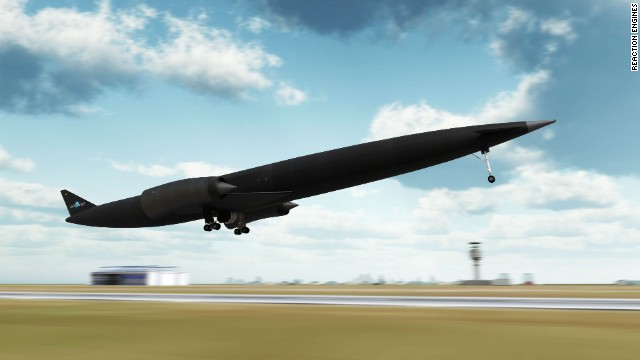
Design image of the Skylon spacecraft taking off. This radical redesign uses a horizontal take off and landing system, and is 100% reusable, offering more frequent, cheaper and deeper flights into space.

Skylon could be used to deliver parts to a satellite.
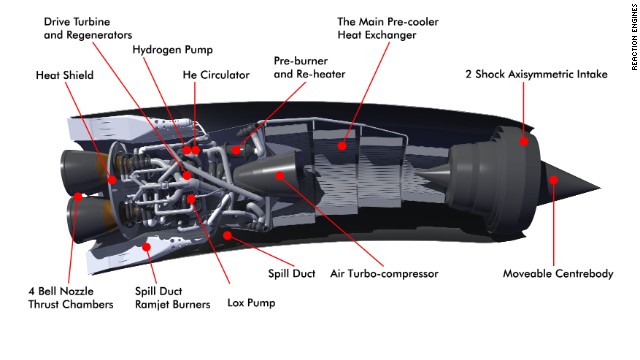
The SABRE engine with a breakdown of its features.
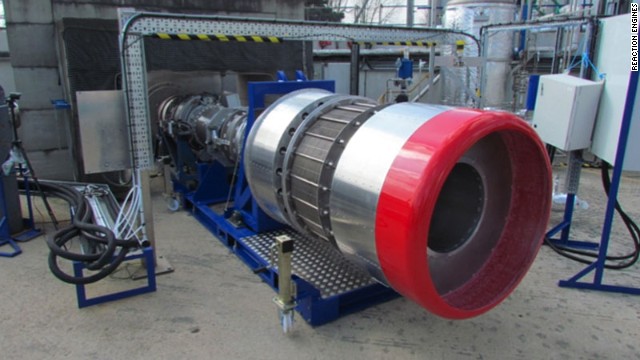
The SABRE engine on the production floor at Reaction Engines' UK site.
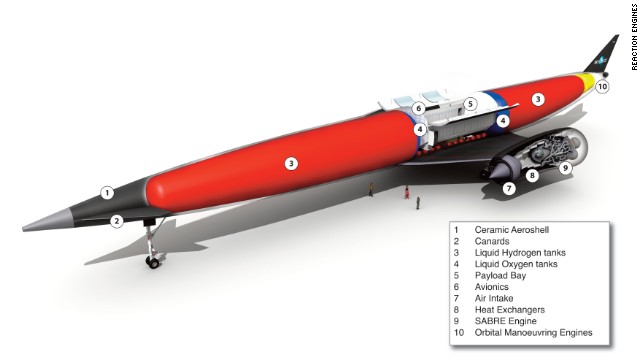
How the Skylon fits together
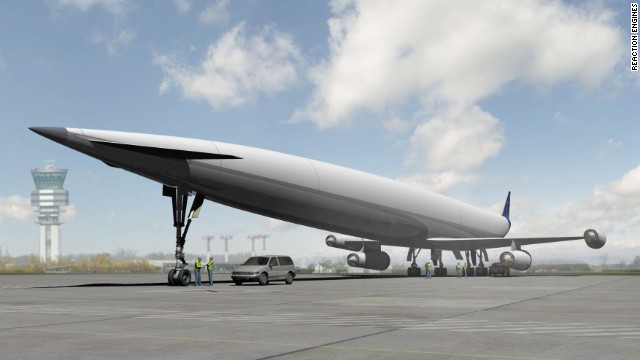
Concept for the 'Lapcat', a hypersonic plane for intercontinental travel that uses the SABRE engine

Design image of the Skylon spacecraft taking off. This radical redesign uses a horizontal take off and landing system, and is 100% reusable, offering more frequent, cheaper and deeper flights into space.

Skylon could be used to deliver parts to a satellite.

The SABRE engine with a breakdown of its features.

The SABRE engine on the production floor at Reaction Engines' UK site.

How the Skylon fits together

Concept for the 'Lapcat', a hypersonic plane for intercontinental travel that uses the SABRE engine
Re: International Aerospace Discussion
http://seekingalpha.com/news/1927405-bo ... ram?uprof=
Boeing-Sikorsky team, Bell selected for U.S. helicopter program
Boeing-Sikorsky team, Bell selected for U.S. helicopter program
The U.S. Army selects Textron's (TXT -0.3%) Bell Helicopter unit and a team of Boeing (BA -0.2%) and United Technologies' (UTX -0.7%) Sikorsky Aircraft to develop the next phase of a helicopter replacement program the Pentagon forecasts could be worth as much as $100B.
TXT and the Boeing-Sikorsky team were chosen from among four bidders vying to build a demonstrator for the Army's planned Joint Multi-Role helicopter, which would replace Boeing's Apaches and Sikorsky's Black Hawks.While the program will not generate significant revenues for several years, investors are watching the test phase as manufacturers position themselves with new technology aimed at making military helicopters fly faster and longer.
Re: International Aerospace Discussion
MDA announced today that the AEGIS Ashore BMD facilities being built in Europe are also capable of having significant cruise missile & aircraft defense capabilities utilizing the SM6 missile.
Re: International Aerospace Discussion
ACUGOTA
[youtube]aFu_eQMIpc4&list=UUiTTe3mBodoZVGVhQDpEFjg[/youtube]
[youtube]aFu_eQMIpc4&list=UUiTTe3mBodoZVGVhQDpEFjg[/youtube]
Re: International Aerospace Discussion
US Navy to test powerful, mobile laser weapon against drones

Here's another 10KW laser developed for another project and tested against Rockets. Range for the 10KW system (test bed) is around 2km for the test bed but that is due to the nature of the system (Concept validation). A 30KW system should be limited by power and cooling requirements (and space) of the JLTV and is a fairly good starting point before they seriously begin to think what the deployable power class should be for a VSHORAD type system (Bigger lasers are in the works as well, and have been tested years ago on mortars, rockets etc)..
[youtube]kgUnDeED9MM#t=57[/youtube]
The US Navy Office of Naval Research has awarded Raytheon US$11 million adapt a tactical laser weapon systems to a vehicle-based laser device, capable of defeating low-flying threats such as enemy drones. For the field demonstration planned by ONR Raytheon will integrate a short-range laser weapon system on a HMMWV. When systems are fielded they are likely to deploy on the future Joint Light Tactical Vehicle (JLTV). Some of the system’s components have already been tested under the ‘Ground Based Air Defense (GBAD) Directed Energy On-the-Move Future Naval Capabilities’ program, demonstrating detection and fire control functions of the system, with the compact phased array radar detecting and tracking UAVs of all sizes. Later in the year, researchers will test the entire system against targets using a 10kW laser as a stepping stone to a 30kW laser. Raytheon will deliver a laser with a minimum power output of 25kW will be used. According to ONR, the 30kW system is expected to be ready for field testing in 2016. Tests will evaluate the complete intercept process, from detection and tracking to firing, all battle-damage assessment, all based on sensors and effectors integrated on the test vehicle.
Raytheon's laser solution generates high power output in a small, light-weight rugged package ideally suited for mobile platforms,” said Bill Hart, vice president of Raytheon Space Systems. Raytheon’s planar waveguide (PWG) technology is the key to its unique approach to high energy lasers. Using a single PWG, the size and shape of a 12 inch ruler, Raytheon high energy lasers generate sufficient power to effectively engage small aircraft. According to Hart, the technology implemented for the test is scalable to more powerful systems. “Our PWG laser architecture is scalable: we can achieve increasingly higher power levels with the same compact design we’re using for GBAD.” he said. With the proliferation of UAVs in the modern battlefield, the Marine Corps expect that units increasingly will have to defend themselves against adversaries trying to perform reconnaissance, surveillance and attack from the air by unmanned systems. According to Col. William Zamagni, head of ONR’s Expeditionary Maneuver Warfare and Combating Terrorism Department, GBAD will give the Marine Corps a capability to counter those UAV threat efficiently, sustainably and organically with austere expeditionary forces. “GBAD employed in a counter UAV role is just the beginning of its use and opens myriad other possibilities for future expeditionary forces.”

Here's another 10KW laser developed for another project and tested against Rockets. Range for the 10KW system (test bed) is around 2km for the test bed but that is due to the nature of the system (Concept validation). A 30KW system should be limited by power and cooling requirements (and space) of the JLTV and is a fairly good starting point before they seriously begin to think what the deployable power class should be for a VSHORAD type system (Bigger lasers are in the works as well, and have been tested years ago on mortars, rockets etc)..
[youtube]kgUnDeED9MM#t=57[/youtube]
Re: International Aerospace Discussion
Russia Developing New Interceptor, and Progressing Bomber
Russia will fly the prototype next-generation strategic bomber in 2019 and develop a new interceptor by 2020 to replace the MiG-31 fleet. Addressing the media on Russian Air Force Day (August 12) the service’s commander Gen. Victor Bondarev also said a new a combat aircraft with forward-swept wings is in development and could emerge soon as a prototype.
Production of the PAKDA strategic bomber will start in 2021-22, with flight tests completing in 2023 so that entry-into-service can take place later that year, according to Bondarev. The commander confirmed that the new bomber is subsonic. It will eventually replace the Tu-95 and the Tu-160.
In a recent interaction with the media, head of Russia’s United Engine Corporation (ODK) Vladislav Mosolov was quoted as saying that the PAKDA’s engine will be developed on the base of the Tu-160’s NK-32 “second edition” motor and use its gas-generator (core). ODK intends to invest $220 million of its own money into the project in addition to the approved governmental funding.
The new interceptor is sometimes referred to as the MiG-41. Bondarev said it forms part of the current Russian armament program ending in 2020. Plans call for replacement of the entire MiG-31 fleet by 2028.
Meanwhile, operational examples of the Sukhoi fifth-generation fighter PAKFA (manufacturer’s designation T-50) will be delivered to the Russian air force in 2016. Today, one industry-owned T-50 already flies with military pilots at the controls in the flight-test and armament trials center (Russian acronym GLITS) at Akhtubinsk airbase in southern Russia.
Bondarev confirmed that earlier this year the Russian MoD placed an order worth more than $470 million for 16 MiG-29SMT multirole lightweight fighters. Delivery is due within “two-three years.” These will supplement 28 such aircraft already in service. Bondarev further stated that the contract for the MiG-35 will be signed later this year. The Russian air force will continue upgrade efforts on the MiG-29 fleet so as to keep them in service for “another 10 to 15 years, maybe more.”
The commander also revealed that earlier plans for a light strike aircraft based on the Yak-130 jet trainer platform have been dropped.
Bondarev expects deliveries of Il-76MD-90A strategic airlifters to commence later this year, with 39 contracted for delivery by 2020. The air force also wants to receive some Il-96 airliners, from the order for 14 placed recently by the Russian government, for delivery by 2024. The military applications would include air tanker, as well as transport roles, according to Bondarev.
The Russian air force continues to build up its presence in the Arctic region. Temp and Rogachevo aerodromes have been re-opened, and work is in progress in Tiksi, Anadyr and Vorkuta. “We must withhold that region. Almost 49 percent of the Arctic territory must belong to Russia, and we shall defend it,” Bondarev said. Plans call for complete radar coverage of Russia’s northern regions.
Re: International Aerospace Discussion
http://www.globalsecurity.org/military/ ... aq-134.htm

Electronic Attack Squadron [VAQ-134]
"Garudas"
VAQ-134 was originally commissioned on 7 June 1969 at NAS Alameda, California as the GARUDAS. Based on an old Hindu myth, the Garuda is the bird that took Wisnu, the God of War, wherever necessary in his quest to protect God's creation from those evil forces that sought to upset and destroy it.
Electronic Attack Squadron [VAQ-134]
"Garudas"
VAQ-134 was originally commissioned on 7 June 1969 at NAS Alameda, California as the GARUDAS. Based on an old Hindu myth, the Garuda is the bird that took Wisnu, the God of War, wherever necessary in his quest to protect God's creation from those evil forces that sought to upset and destroy it.
